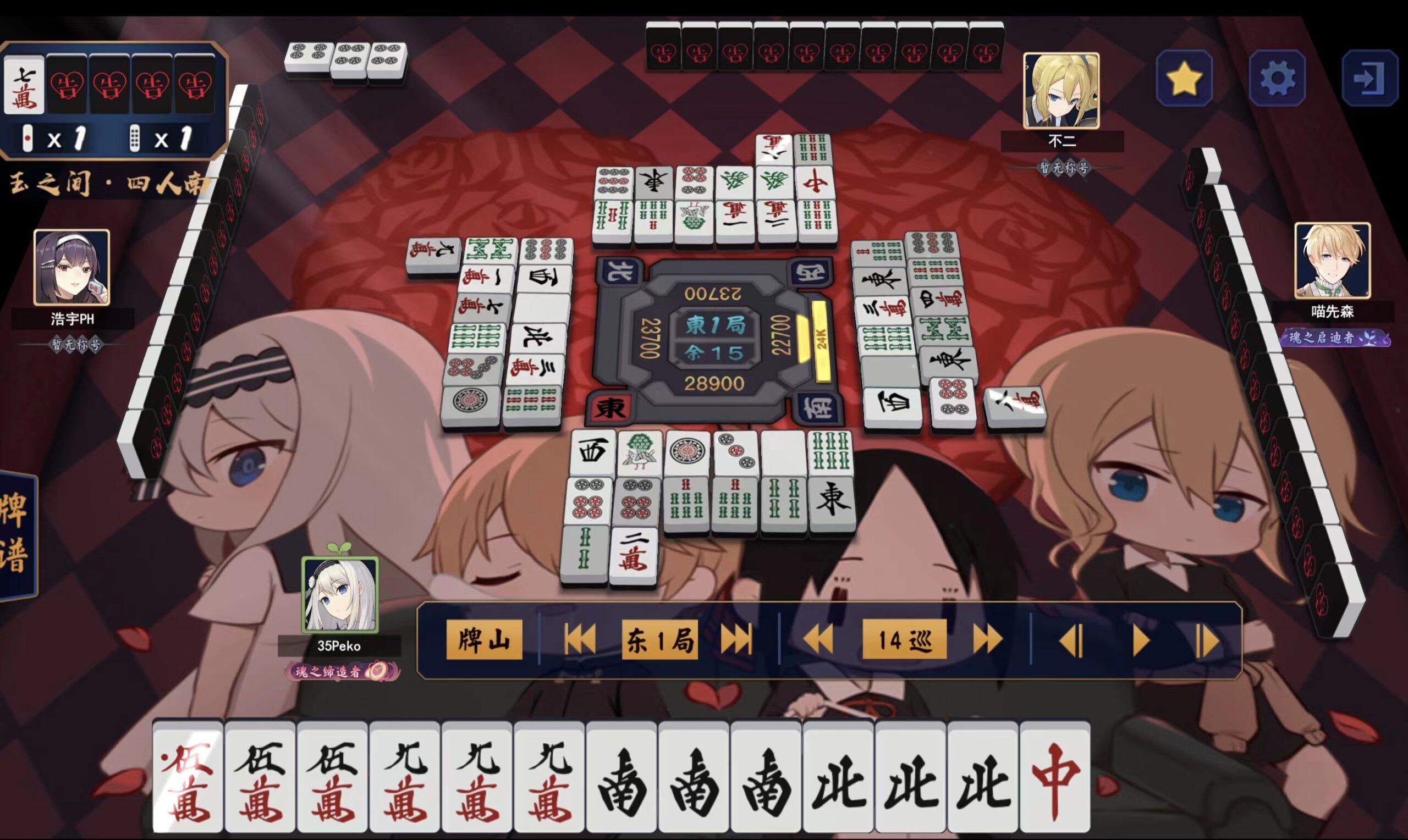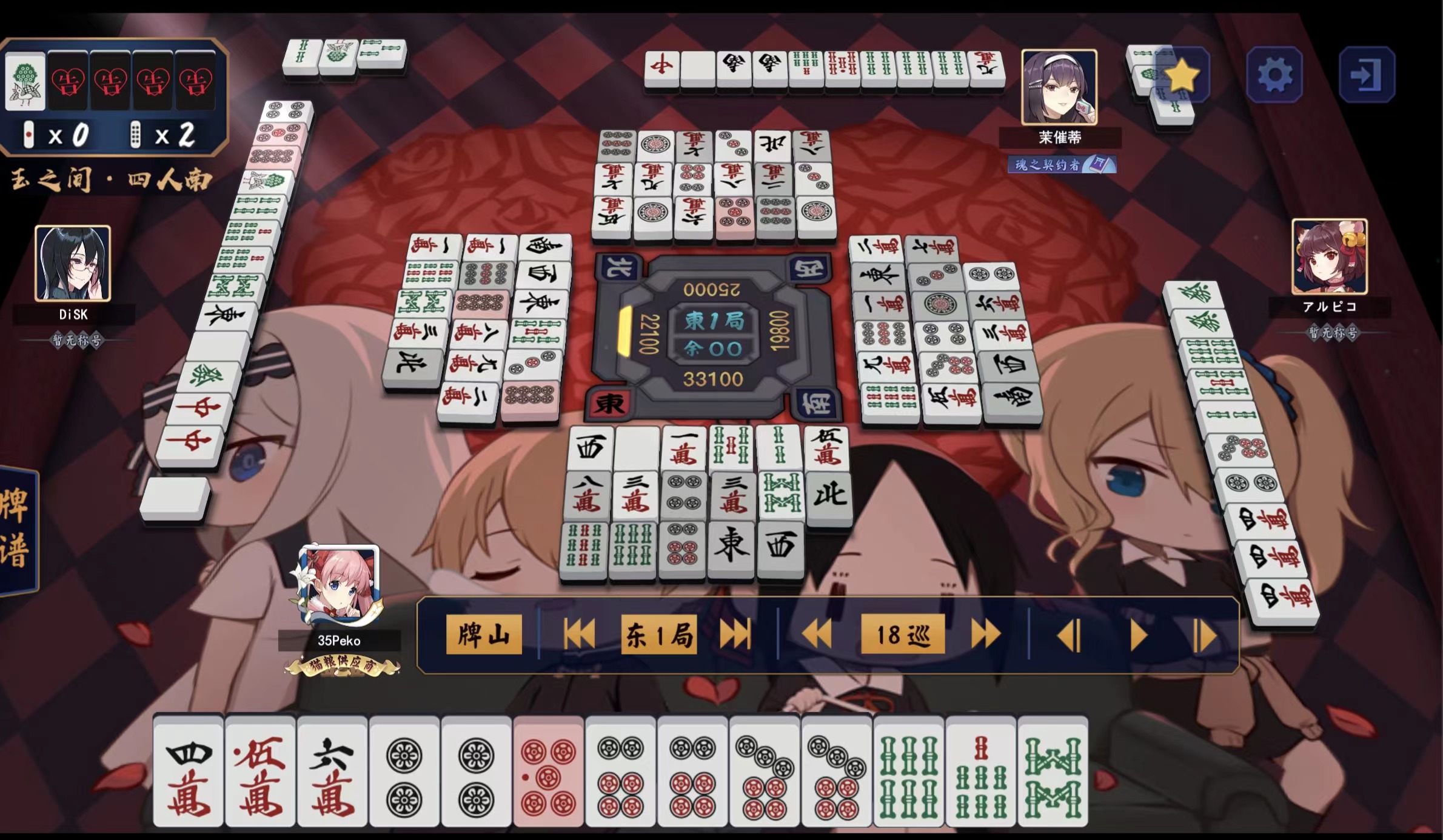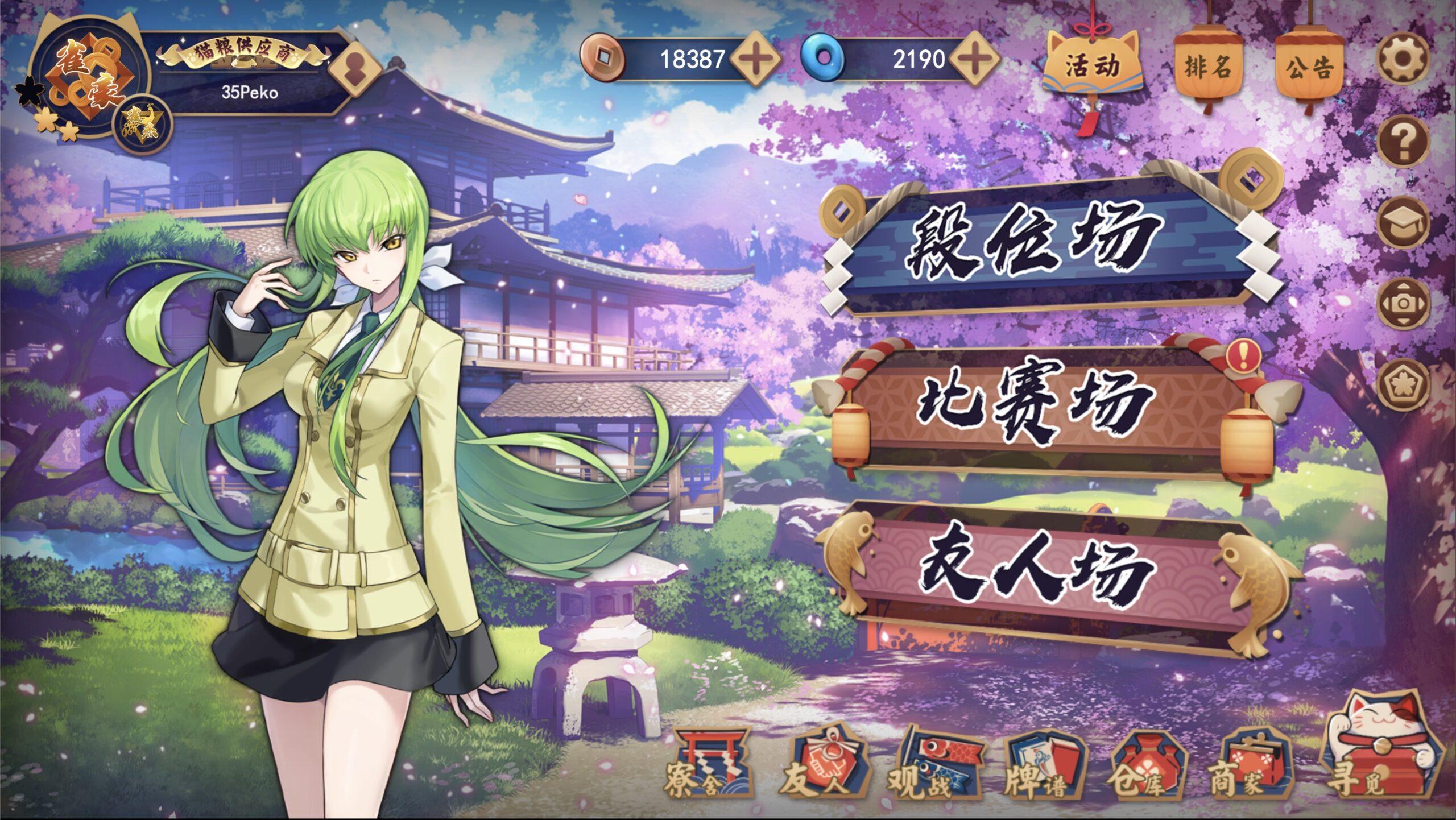The game I’m playing is Japanese Mahjong. According to Wikipedia, Mahjong is “a tile-based game that was developed in the 19th century in China and has spread throughout the world since the early 20th century.” There is a lot of divergent Mahjong rules originated from different parts of the world. It is difficult to find the exact creator of the original Mahjong game from ancient China or the creators of each different divergents.
Originally Mahjong was only a board game, where 3-4 players use domino-like tiles to achieve some patterns to win the game. Later on, with the development of the internet, there are many online Mahjong platforms. The platform of the Japanese Mahjong I played is Mahjong Soul, developed by Catfood Studio and published by Yostar. It’s available via Web browser, Android, iOS, Microsoft Windows, macOS, etc.. I played it via Web browser.
The target audience of traditional Japanese Mahjong should be 18+, because although Japanese Mahjong focuses a lot more on strategy, it’s ultimately still gambling. Players usually input real money to the game to the game, and lose all the money if lose the game. Nonetheless, in my opinion, the target audience for Mahjong Soul is 14+, because this platform does not allow players to bet. It’s true that players can still input real dollars, but the money is only used to purchase skins, and the money has no effect on the games per se.
Japanese Mahjong is a player vs. player game. It’s an outwit game, where each player’s objective is to use the tiles in hand to reach some patterns. It’s a zero-sum game, as there could only be one winner and 2-3 losers. The boundary of Mahjong Soul is the server holding the game room. The mechanics of Japanese Mahjong is much more complex than the traditional Chinese Mahjong, so I’m not going to elaborate the rules here.
There are two types of intended fun. The first is Challenge, as the players need to calculate a lot of probabilities and find the best action: reachable pattern with highest score with highest probability without being impeded by the currently or previously discarded tile. It is very difficult, but would result in a great sense of proud if successful. As shown from the picture below, I was able to “Hu” with the tiles in hand, and the tiles look so good. I felt really enjoyable.

Another type of intended fun is submission, as the rules of Japanese Mahjong are so complicated. Several times I was almost able to “Hu”, but because of some previous tiles I discards, I wasn’t able to. As the image shown below, I’ve reached the state of needing to make a thorough decision on choosing the tile to discard.

Both intended funs are reached.
Japanese Mahjong makes a really clever decision on its rules, so that strategy plays an important rule. It is still true that if you get extremely lucky, you’ll win no matter how bad you play; if you get extremely unlucky, you will lose no matter how good you play. However, the luck component is among the smallest of its Mahjong companions. I don’t have anything specific to Mahjong Soul on good decision making.
On the bad side, there are two things I noticed about Mahjong Soul, that I think maybe can be improved:
Firstly, it happens that the tile I discarded makes another player “hu”, but the sound effect is very scary. There’s a sudden “hule” sound made by the system. I’ve already felt bad because this situation makes me lose more points, and that sudden sound usually shocks me a lot. I think it would be better that on my end, this sound could be eliminated or changed.
Secondly, Mahjong Soul gives extra information than the originally in-person version. That is, when someone discards a tile, and another player can “chi”(flush) or “peng”(3 of a kind), there will be a several-second lag on everyone’s end; on the other hand, without this lag, it means no one can “chi” or “peng” with the discarded tile. On one side, since this information is to everyone, it’s still fair to all players who know it. However, this information should not be public according to the original design.
Throughout the experience playing Japanese Mahjong, it happens a lot that someone losing the game shouting out “I’m just unlucky”. However, it happens a lot that I think they’re discarding the wrong tile to make them lose. Though, it also happens that someone is really unlucky, but if doing the right thing, this type of player would not lose too much, and should be rank second or third.
From my experience previously playing in person Mahjong, it also happened that someone is getting extremely lucky, and already “hu” when just getting the tiles…
Though strategy is important, luck and randomness are still a big part of the game. At each round, each players takes turn to draw one tile and discard one tile. The discarding part requires strategy, while the drawing part is completely probability. The players need to remember the number of occurrences of types of tiles, as well as use the discarded tiles by other players, to estimate the probability of the the next drawing card.
Comparing to the traditional Chinese Mahjong, the basic ideas are the same, but Japanese Mahjong adds more rules on “hu”, to let the players have more room for calculation and strategy, and to enhance the lower bound. For players enjoying outwitting, Japanese Mahjong is definitely easier to get addicted to; however, to those players who do not care too much about game information or calculation, traditional Chinese Mahjong might be easier to get addicted to, as the rules are more simple.
Comparing to some poker games such as Texas Hold’em, Japanese Mahjong, with larger probability, requires more calculation too. This is because Texas Hold’em switches to a new pile of cards, and each round there is a maximum fixed number of cards being drew. On the other hand, in Japanese Mahjong, very likely there will be approximately 10 rounds, at each round the player needs to discard a tile. The number of tiles needed in the gameI would say Texas Hold’em is a lot.
I would say a minimax player would save for the worst case, and it also compensate for the bad luck too. It’s better to play the game rather than play the player. However, it is also true that when players get really familiar with each others, sometimes it is safe to discard a tile even if it makes another player “hu”, if that player is a perfectionist and only wants to have a large “hu”. On the other hand, Texas Hold’em has some chemical effects if playing with familiar people, and play the players definitely wins more money.
It’s not very easy, for normal people, to really addict to Japanese Mahjong. This is because it requires a lot of brain works, if the player really intends to gain challenge and submission. Just playing the several games would make the player feel really tired, and difficult to continue deliberating, and would stop the game spontaneously.
Traditional Chinese Mahjong, since it focuses a lot more on luck, is really easy to get addicted to, as the players always think “I’ll be lucky in the next round”, so they continue playing. And since this version of Mahjong does not really require tactics, players don’t get tired neither.
Texas Hold’em, on the other hand, depends on the players. Some player would really get addicted to the poker game, especially if they’ve won or lost a lot. Some others would not, especially if they perform a lot of computation of the cards in hand, and estimation of the cards by other players.




